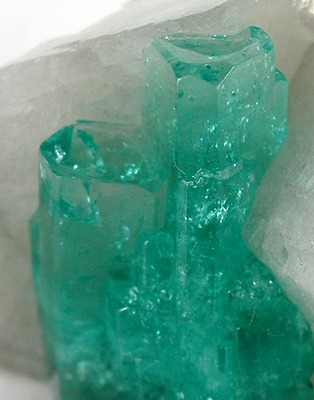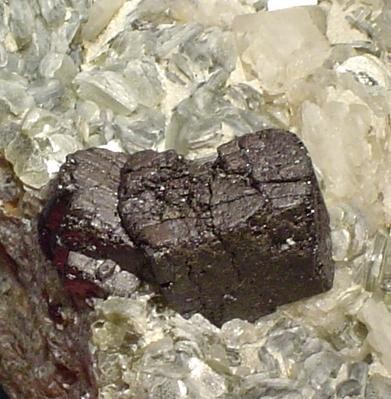 |
| The inside of a pegmatite mine, Ruggles Mine in New Hampshire Photo by Squelle |
Pegmatites are mined not so much for their exotic minerals, but the more mundane feldspar, mica and quartz. The exotic minerals that include gemstones are usually a byproduct of this mining. This is true of most pegmatite mines except for a few like the Maryall mine in
Most miners are more interested in the three primary minerals of feldspar, mica and quartz than they are in the more exotic minerals; therefore these minerals are often thrown onto the waste pile where they remain for the rockhounds to collect later. It is among these tailings where most of the gemstones are found.
By working tailing heaps you are working with stone that has already been mined, and broken up making for much easier collecting. Most of the time you'll encounter stones that are not much more than a foot in diameter, and many of them are usually smaller. You will occasionally encounter a larger stone where it is extremely handy to have in your collection of tools a fairly large sledgehammer weighing more than 8 pounds. Most collecting on a tailings heap can be done with a sledgehammer that weighs 8 pounds, and you can do a considerable amount of damage with an eight pound hammer.
For most collecting in a pegmatite one of the most useless things is a regular geologist’s pick because most of them are too light. What is far more effective is a 4 pound engineer’s hammer and a bullpoint. Bullpoints are a hardened steel rod about three quarters of an inch in diameter having a hexagonal shape about a foot long and coming to a hardened point on one end..
Some of the other things you need in your tool kit for collecting specimens in a pegmatite is a good jeweler's loup is at least 8X magnification on a chain so you can wear around your neck. A stone chisel is another device that should be included. Your kit should also include some old newspapers to wrap your specimens. A small pad and pencil to write down descriptions of the specimens you have found. You should also leave a number on the newspaper holding the specimen so you'll know what it is when you get home.



